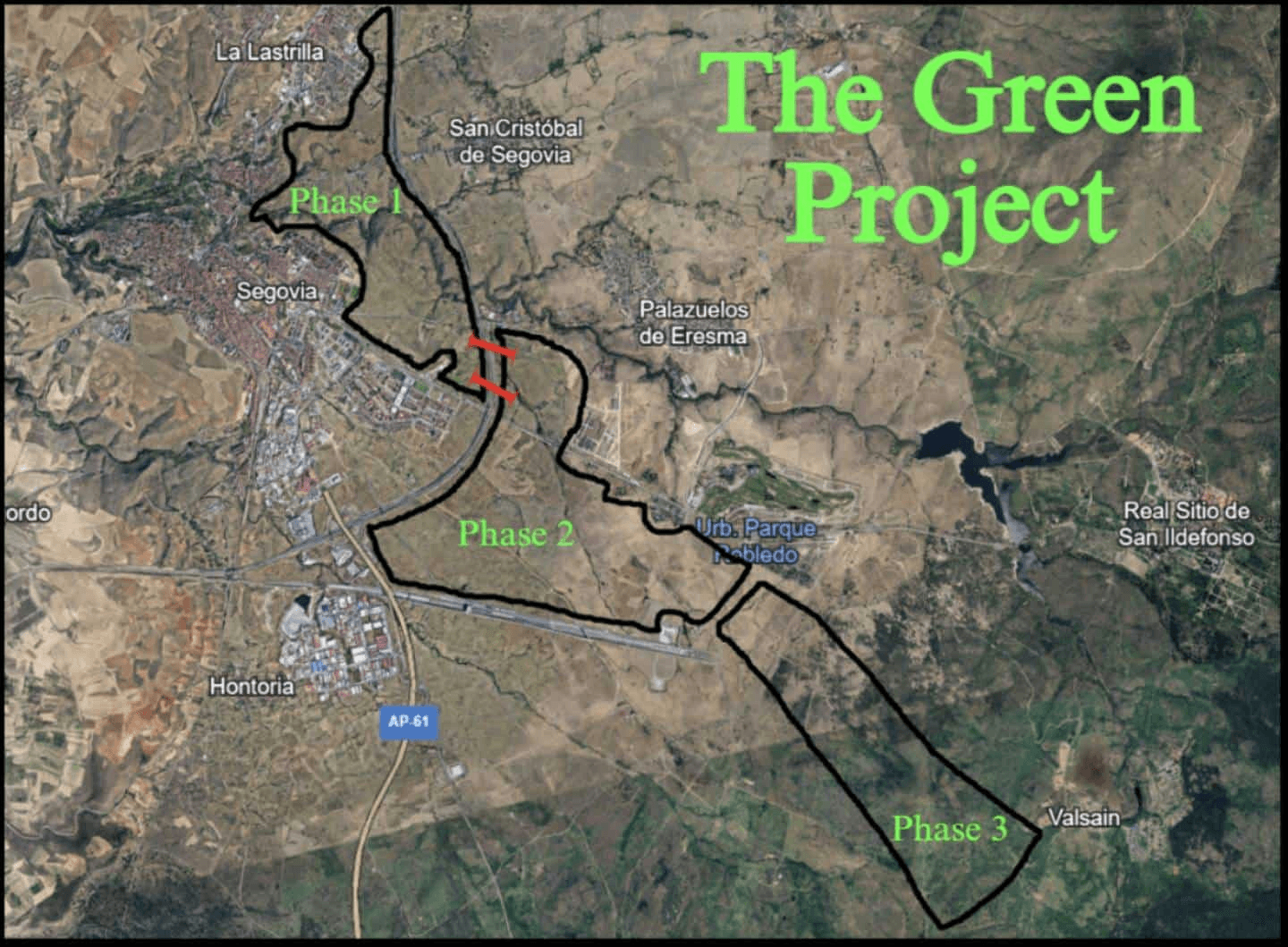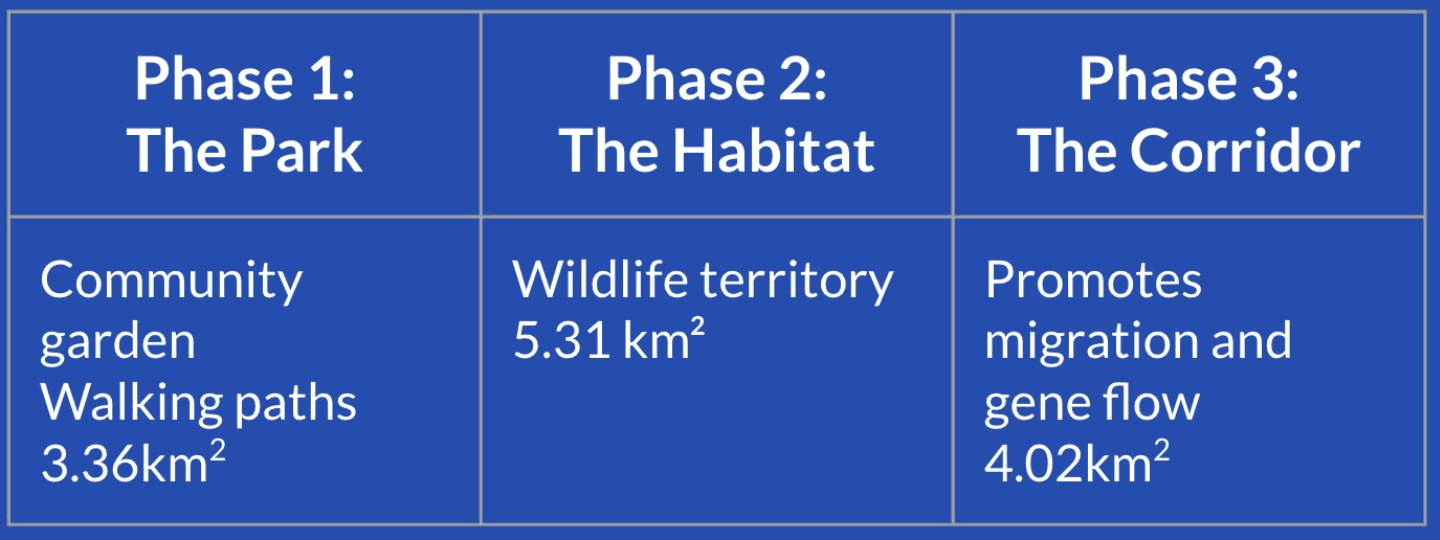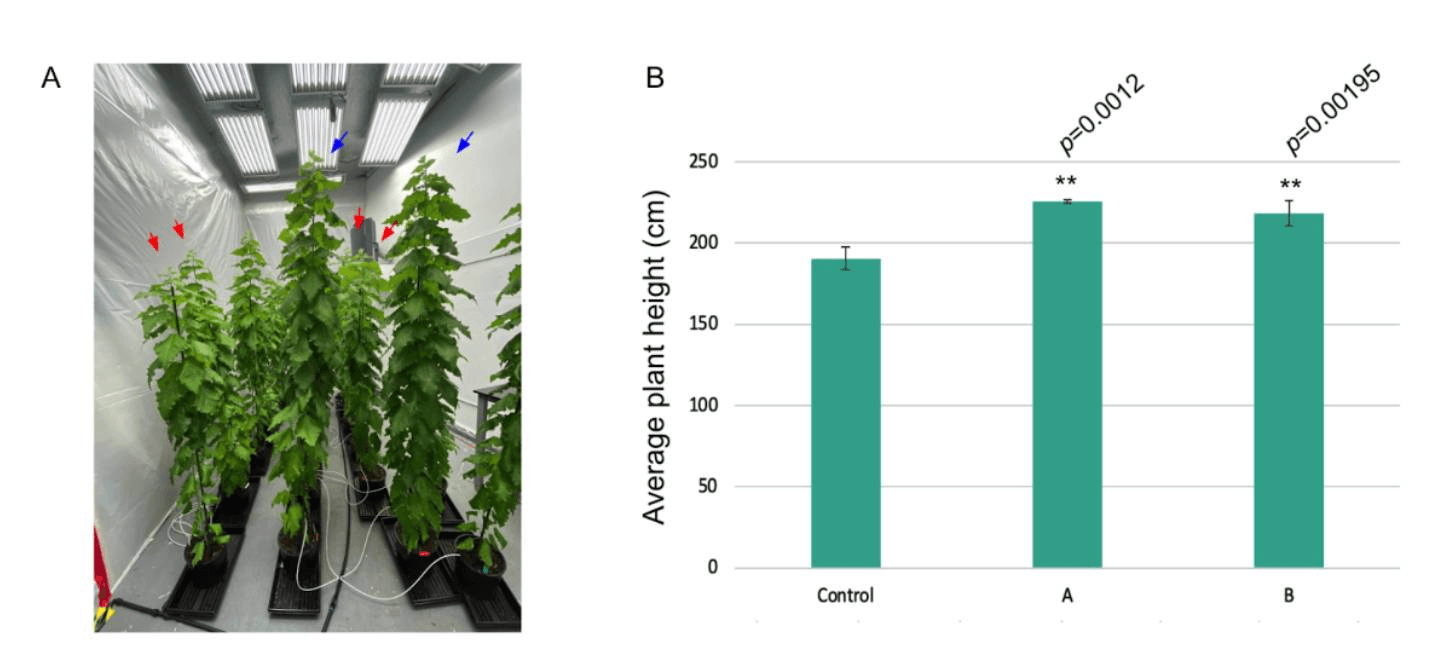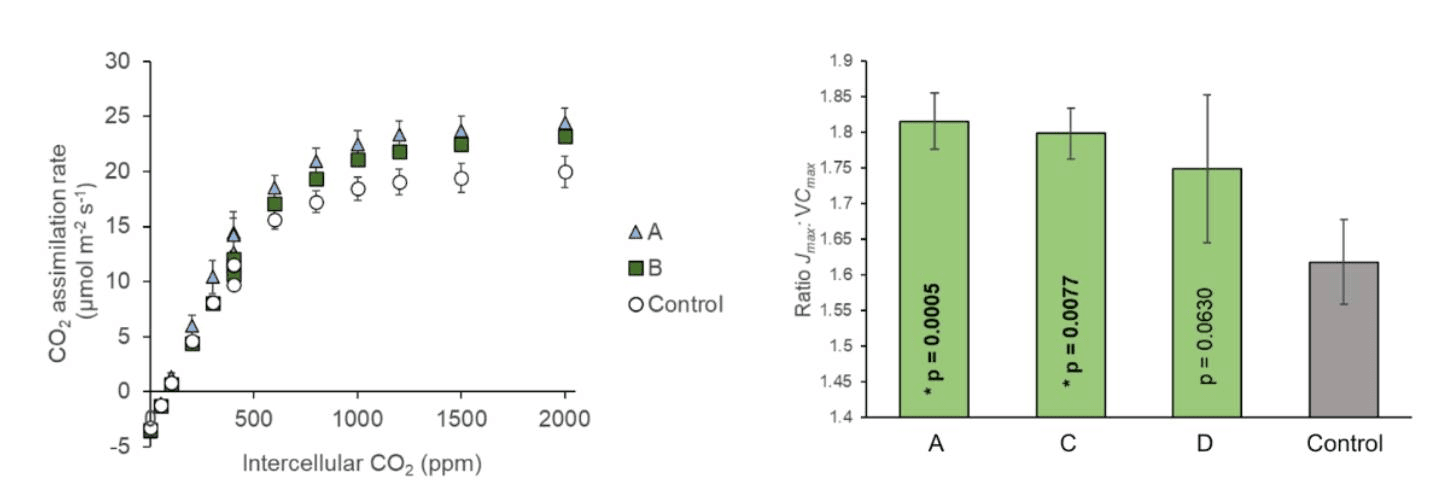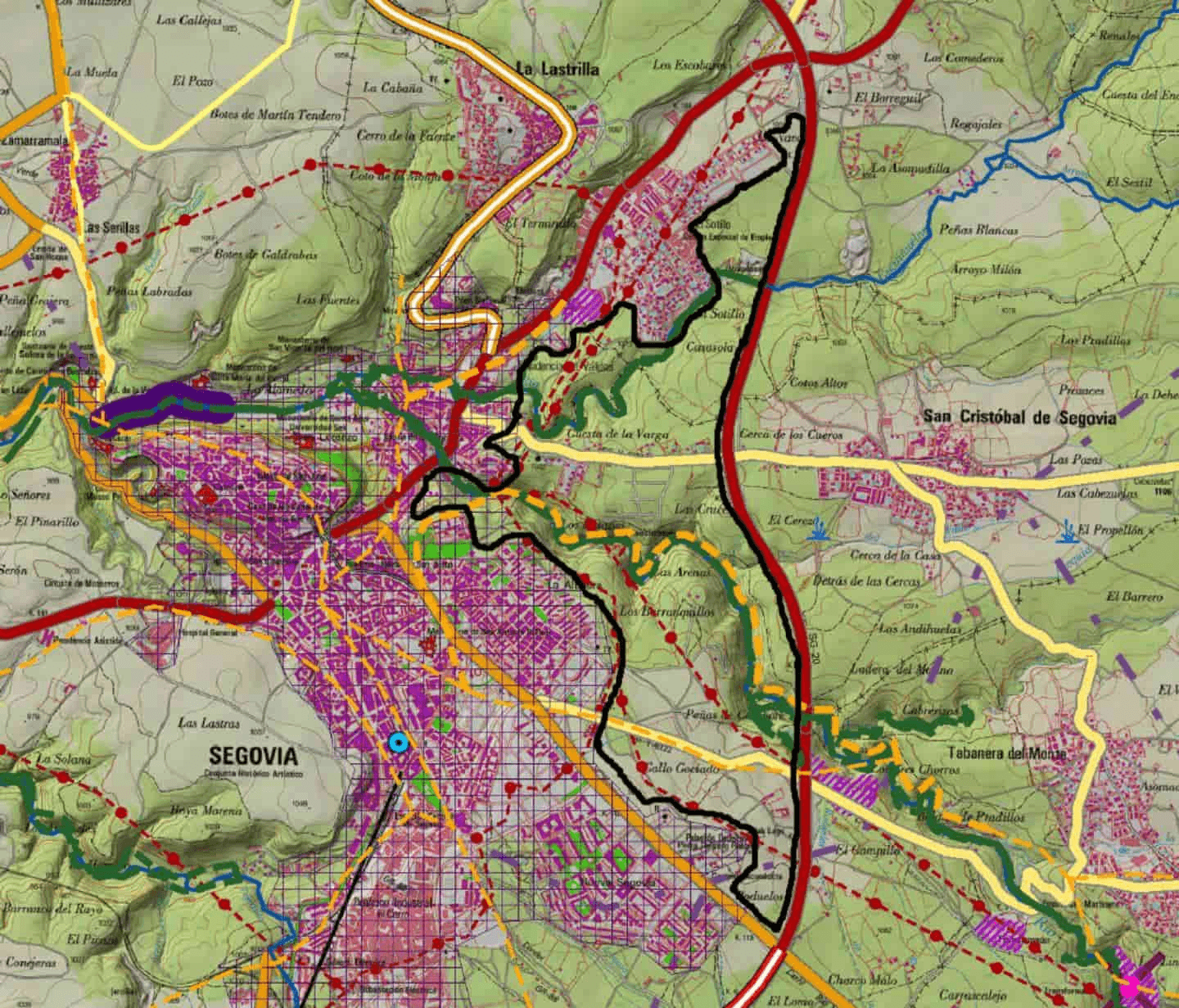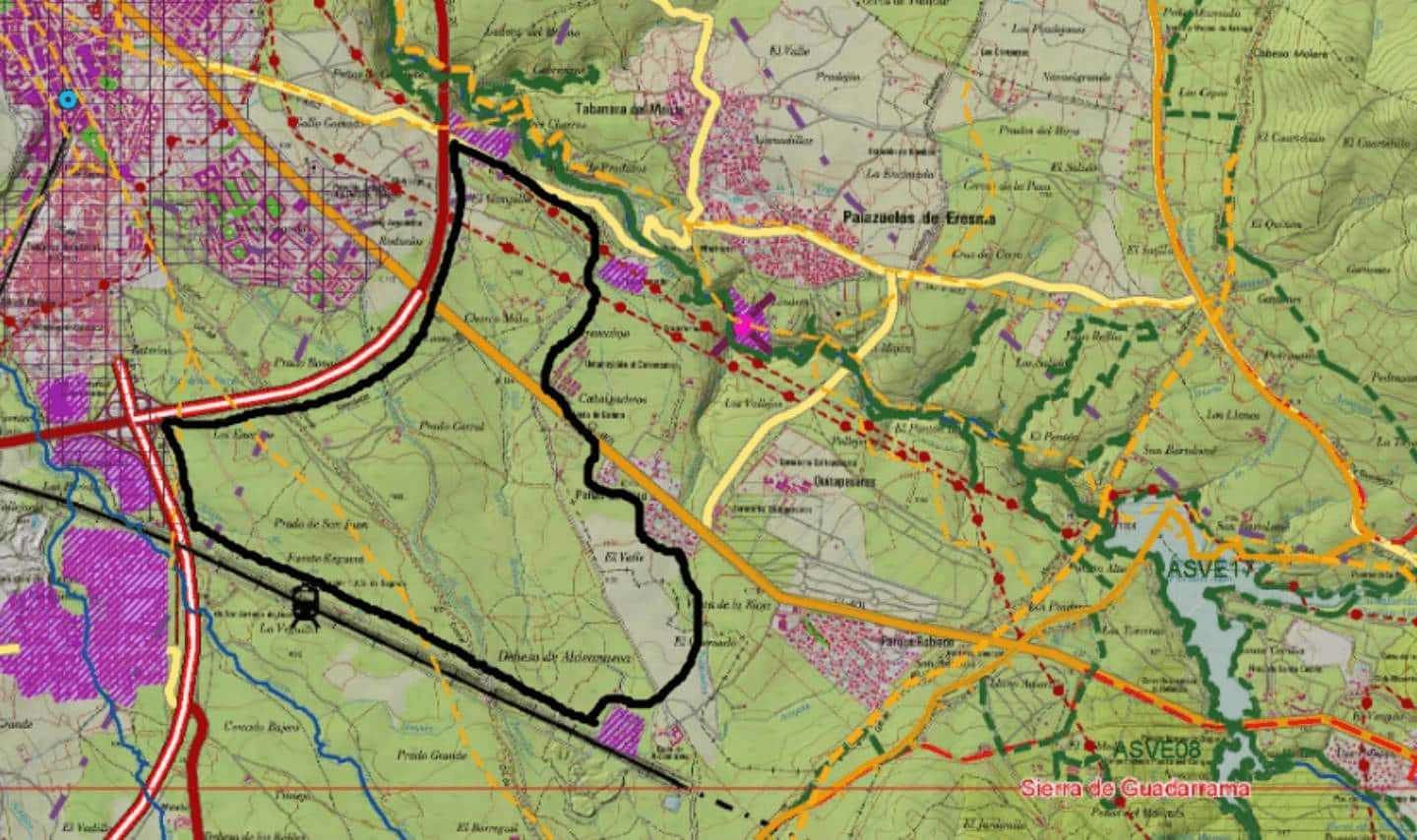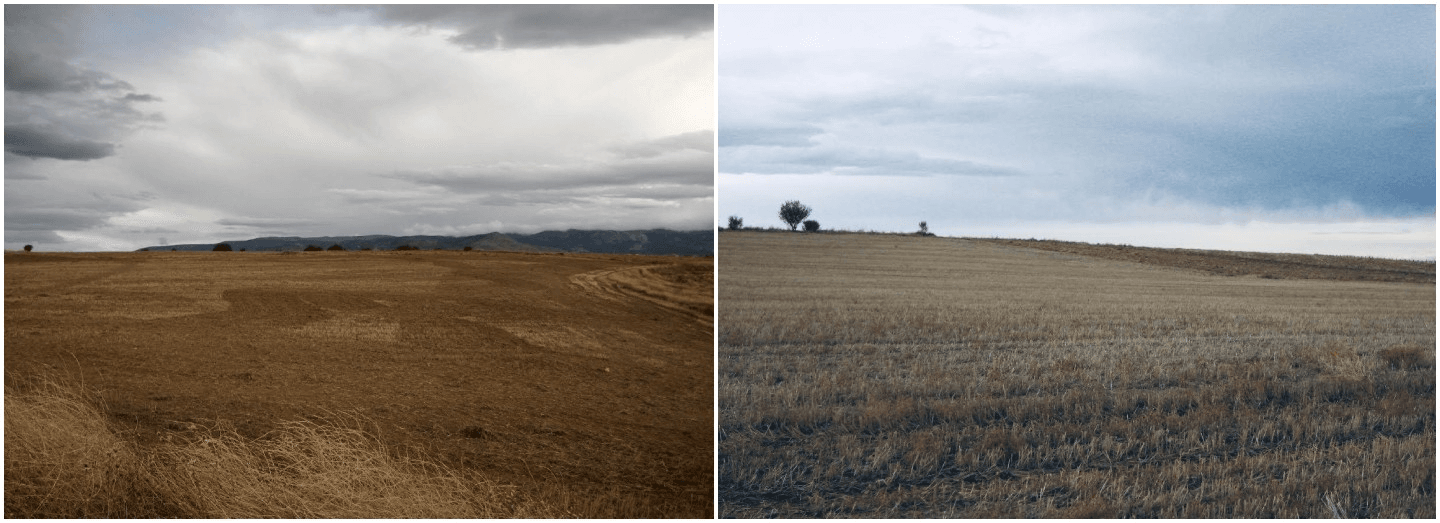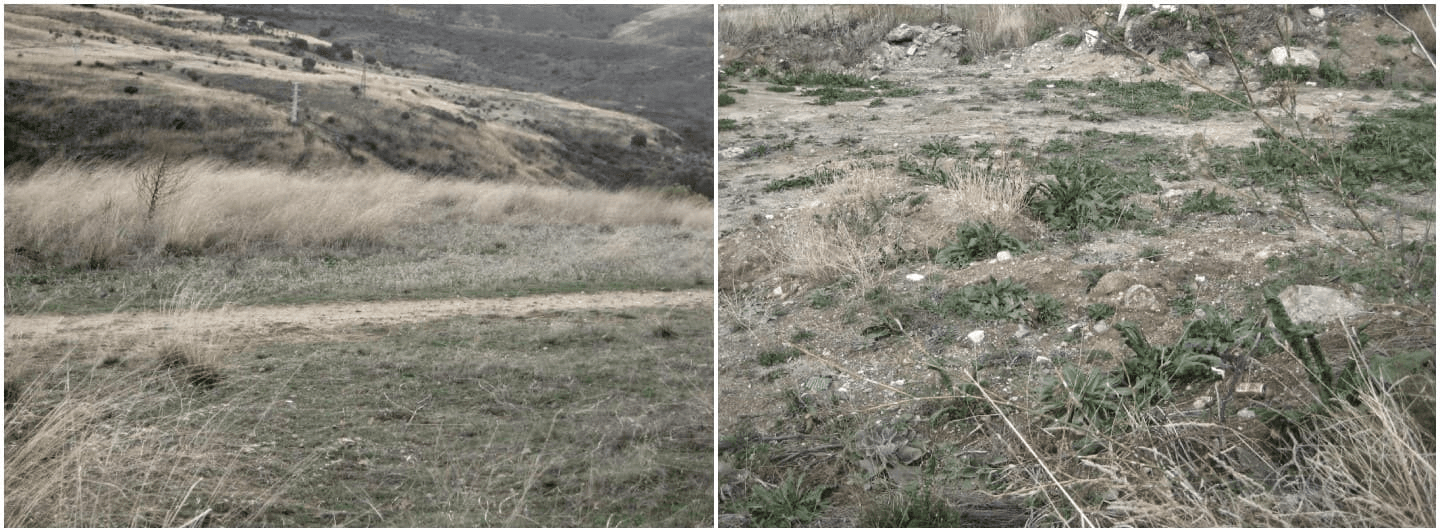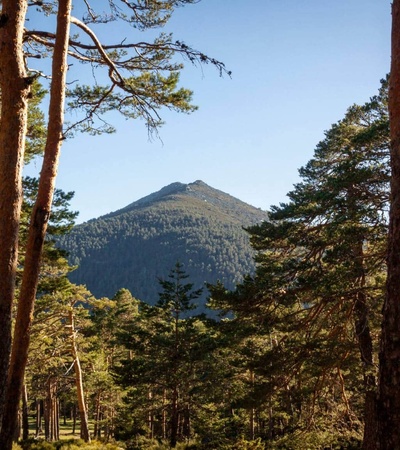
The Green Project’s vision is to establish a large park system in Nueva Segovia containing forests of genetically modified poplar trees that absorb atmospheric carbon dioxide and soil heavy metals at augmented rates. This park system simultaneously provides an educational/recreational environment for local communities and creates habitat corridors for wildlife.
Project Overview
Project Overview
Can you provide a brief overview of the project you've been working on?
While the area of Vieja Segovia is full of lush vegetation and public park land, we noticed that the land near Nueva Segovia is much more industrial and contains almost no green space, despite having a higher population density. We decided to restore degraded and unused land and replant trees in the area- but not just any trees. We plan to use a genetically modified hybrid poplar that can absorb up to 27% more carbon and grow 53% more above-ground biomass than the control trees.
Purpose of the project
Purpose of the project
What inspired or motivated you to choose this particular project?
Segovia, along with the rest of Spain, has been experiencing a reduction in biodiversity due to land desertification over the past two decades. The Green Project’s goal is to create a system of three parks, increasing the area of green spaces in Segovia, and simultaneously creating a protected habitat/ ecological corridor that connects Segovia with the Sierra de la Guadarrama. While the project’s primary objective is to green Segovia, a contingent objective is to amplify biodiversity in Segovia, in order to maintain ecosystem services and to enhance the resilience of ecosystems.
The lack of green spaces in Segovia contributes to the urban heat island effect. Because there is a lack of shade, microclimate stabilization and precipitation, the concrete and asphalt of the city retain heat, causing the urban center to heat up in comparison to the cooler forested mountain ranges.
The general objective is to transform degraded land and increase biodiversity within the Segovian Province. The Green Project aims to create three conjoined green spaces: a peri-urban park, a protected natural habitat, and an ecological corridor that connects forested areas in Segovia with the national park, Sierra de Guadarrama. The general objective of our project consists of three strands: Improving the land (soil quality, biodiversity, desertification), improving the atmosphere (carbon sequestration, temperature, microclimate), and improving social connections (community bonds, mental and physical health).
Technical Details
Technical Details
Could you explain the technical aspects of your project? What software, tools do you use?
The Green Project would be undertaken in three main phases, each phase catered to solve different issues in Segovia and its surrounding regions. Phase 1 (called “The Park”) focuses on rehabilitating a large unused plot of land near the outskirts of the Nueva Segovia city. It involves the creation of a 3.36 km2 green area with walking/cycling paths, educational signs, and a community garden. Phase 2 (“The Habitat”) is a protected wildlife territory spanning 5.31 km2, consisting of 50 % transgenic trees and 50 % endemic species. Its purpose is primarily to foster biodiversity and facilitate the growth of local flora and fauna populations). Phase 3 (“The Corridor”) consists of a thinner strip of forested land spanning 4.02 km2 that serves as a wildlife corridor, connecting The Habitat with the mountainous national park of Sierra de Guadarrama.
The transgenic poplar hybrid that is used in this project is a hybrid poplar (Populus tremula x Populus alba) called INRA717-IB4 was engineered by The Living Carbon corporation. As mentioned earlier, according to peer-reviewed studies, it is able to grow 53% faster and absorb 27% more carbon in comparison to control plants. This transgenic poplar species is also able to rapidly accumulate metals like nickel and copper from toxic soils, improving fungal decay resistance. The gene transfer methodology involved introducing genes from pumpkin (Cucurbita maxima) and diatom algae into the poplar tree genome, using a bacterial plasmid as a vector. This enables the transgenic poplars to accumulate more biomass, reduce photorespiration rates and efficiently recycle carbon from phosphoglycolate into growth-essential sugars (Living Carbon, 2022).
Challenges and Solutions
Challenges and Solutions
Were there any significant challenges you encountered during the project, and how did you overcome them? Can you share a specific problem-solving moment that stands out in your project?
A significant challenge we encountered was the land use planning and stakeholder assessment- we had little experience with these topics, as our main focus is sustainability and the environment. Additionally, there was very little data on Segovia’s public land policies, and the bureaucracy process required to obtain the land for the park. Eventually, through intense research into the depths of Segovian legislation, we found many of the laws and policies we were looking for. At one point, we were so determined to obtain data on public attitudes towards genetically modified organisms, that we went out to the streets of Vieja and Nueva Seogvia and asked strangers to participate in a survey. The vast majority of the people we interviewed loved the concept of the Green Project.
Collaboration and Teamwork
Collaboration and Teamwork
Did you collaborate with other students or team members on this project?How did teamwork contribute to the success or progress of your project?
Our project group contained three members, Anna Hursan, Milena Mosher, and Nicoya Streb. Teamwork was a critical factor that allowed us to complete many portions of the challenge- we often had to brainstorm together, and come up with ideas, so having three different viewpoints on the same problem was very helpful. We also relied and trusted each other to complete our designated portions- this allowed us to divide the work equally and all work towards the final outcome.
Learning and Takeaways
Learning and Takeaways
What key lessons or skills have you gained from working on this project?
Working on this project taught us the immense amount of planning urban development requires- our project was on a small scale and generally theoretical, yet the planning process still took hours upon hours. We now have more respect for the real initiatives that develop green spaces and parks, as it truly is difficult to achieve.
Future Development
Future Development
Do you have plans for further development or improvement of your project in the future?
We would love to see The Green Project or a similar initiative actually be put into action- the land around Segovia is very degraded, and reforestation would benefit so many people, as well as the ecosystem. However, the Green Project is very ambitious, so perhaps a smaller scale reforestation project would be more viable.
Attach pictures
Attach pictures
Data on the Proposed Transgenic Species:
Average Transgenic Poplar Tree Height Versus Control Plant Height
Note. After 17 weeks, transgenic seedlings (blue arrows) showed a significant height increase compared to controls (red arrows), with p value less than 0.01.
Figure 3
CO₂ Assimilation Rate of Transgenic Poplar Trees Versus Control
Note. CO₂ Assimilation Rate. The study conducted by Living Carbon measured CO₂ gas exchange on multiple events (A, B, C, D) from two different experiments and found that all photosynthesis- enhanced trees achieve a higher rate of carbon assimilation than controls, when not limited by light or carbon dioxide.
Figure 5
Biomass Accumulation in Transgenic Trees Versus Control Trees
Note. The fresh and dry weight of the leaf, stem, root, and stem tissue were measured to see the difference in biomass between the transgenic trees and control trees. The measurements were done at week 21 and it was discovered that the transgenic trees had a 53% increase in biomass over the control trees.
Additional information
Additional information
Closer views of the proposed Green Project:
Map of Phase 1, "The Park"
Note. Map of Segovia is from la Diputación de Segovia, 2022. Outline drawn by Nicoya Streb, 2024.
Figure 8
Map of Phase 2, "The Habitat"
Note. Map of Segovia is from la Diputación de Segovia, 2022. Outline drawn by Nicoya Streb, 2024.
Figure 9
Map of Phase 3, “The Corridor”
Note. Map of Segovia is from la Diputación de Segovia, 2022. Outline drawn by Nicoya Streb, 2024.
Figure 13:
Digital Camera Images of Proposed Site for The Green Project.
Note. The lack of biodiversity and degraded terrain is visible in these images. These images were taken in three locations, which are denoted by yellow stars in the map below. These two images were taken from a group of hills, slightly farther away from the urban fringes of Nueva Segovia. This is the area where Phase 1 will be implemented, and the soils will be restored. One can observe the mechanical plough marks etched into the compacted soil, left there by decades of intensive agriculture.
Note. These two images were photographed on barren land close to Hontoria, in the area where The Green Project plans to construct Phase 2, The Habitat. A few sparse bushes and scrub growth is visible, but it is evident that this area is unused and severely lacking in biodiversity. Anthropocentric pollution is present (a discarded coke can), and remains of urban rubble is embedded in the surface of the soil.
Final Presentation Link
Final Presentation Link
